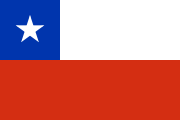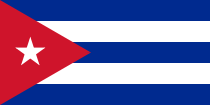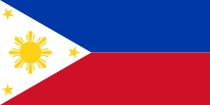Bell 47
| Model 47/H-13 Sioux | |
|---|---|
 |
|
| Model 47G | |
| Role | Multipurpose light helicopter |
| Manufacturer | Bell Helicopter |
| Designed by | Arthur M. Young |
| First flight | 8 December 1945 |
| Introduced | 1946 |
| Primary users | United States Army British Army |
| Produced | 1946-1974 |
| Number built | 5,600 |
| Developed from | Model 30 |
| Variants | Bell 201 Bell 207 Continental Copters El Tomcat |
The Bell 47 is a two-bladed, single engine, light helicopter manufactured by Bell Helicopter. Based on the third Model 30 prototype, Bell's first helicopter designed by Arthur M. Young, the Bell 47 became the first helicopter certified for civilian use on 8 March 1946.[1][2] More than 5,600 Bell 47 aircraft were produced, including aircraft produced under license by Agusta in Italy, Kawasaki Heavy Industries in Japan, and Westland Aircraft in the UK. In 1957 two specially built Bell UH-13J Sioux became the first U.S. presidential helicopters.
Contents |
Design
Early models were variable in appearance, with open cockpits or sheet metal cabins, covered or open structures, some with four-wheel landing gear. Model D and Korean War types settled to a more utilitarian style. The most common model, the 47G introduced in 1953, can be recognized by the full bubble canopy, exposed welded-tube tail boom, saddle fuel tanks, and skid landing gear.
Later 47H and 47J Ranger models had a regular cabin with full cowling and monocoque tail boom. Engines were Franklin or Lycoming horizontally-opposed piston engines of 200 to 305 HP (150 to 230 kW). Seating varied from two to four. Many are still in use as trainers and in agriculture (as of 2005).
Operational history
The Bell 47 helicopter entered U.S. military service in late 1946, in a variety of versions and designations for three decades. In the Korean War, it was designated the H-13 Sioux by the United States Army. It has also served as the helicopter of choice for basic helicopter flight instruction in many countries.
NASA had a number of Bell 47s during the Apollo program, used by astronauts as a trainer for the Lunar Lander. Eugene Cernan had a near disastrous accident shortly before his flight to the moon on Apollo 17 by crashing one into the Indian River.[3]
Initially, the US Navy procured several Bell 47s, designated HTL-1, between 1947 and 1958. The US Coast Guard evaluated this model, and procured two HTL-1s for multi-mission support in the New York Harbor. The most common US Navy version of the 47 was designated the HTL-4, and dispenses with the fabric covering on the tail boom. The US Coast Guard procured three HTL-5s in 1952 (similar to the HTL-4 but powered by a Franklin 0-335-5 engine) and used these until 1960.[4]
The Coast Guard procured two of Bell's Model 47G and designated them HUL-1G in 1959.[4]
The Los Angeles County Fire Department in California used the Bell 47 as the department's very first aircraft in 1957.
The Sioux military version was often equipped with military evacuation panniers, one to each skid, with an acrylic glass shield to protect the patient from wind.
H-13 were produced in Japan by a Bell and Kawasaki venture; this led to the Bell-Kawasaki KH-4 variant, essentially a three seat version of the Model 47.
Variants
- Section source: Aviastar[5]
Civilian
- Bell 47
- Pre-production version, powered by a 133-kW (178-hp) Franklin piston engine.
- Bell 47A
- Improved version of the Bell 47, powered by a 117-kW (157-hp) Franklin O-335-1 piston engine.
- Bell 47B
- Equivalent to the military YR-13/HTL-1, powered by the Franklin O-335-1 piston engine.
- Bell 47B-3
- Agricultural/utility version with open crew positions.
- Bell 47C
- Bell 47D
- First to appear with a moulded 'goldfish bowl' canopy.
- Bell 47D-1
- Introduced in 1949, it had an open tubework tailboom reminiscent of the Bell Model 30, ship number 3, and a three-seat configuration.
- Bell 47E
- Powered by a 149-kW (200-hp) Franklin 6V4-200-C32 engine.
- Bell 47F

- Bell 47G
- Combines a 149 kW Franklin engine with the three-seat configuration of the 47D-1 and introduced the saddle-bag fuel tank configuration.
- Bell 47G-2
- Powered by the Lycoming VO-435 engine. Produced under license by Westland for the UK military.
- Bell 47G-2A
- Powered by a 179 kW version of the VO-435.
- Bell 47G-2A-1
- Wider cabin, improved rotor blades and increased fuel capacity.
- Bell 47G-3
- Powered by a supercharged 168 kW Franklin 6VS-335-A.
- Bell 47G-3B
- Powered by a turbocharged 209 kW Avco Lycoming TVO-435.
- Bell 47G-4
- Three-seat helicopter powered by an Avco Lycoming VO-540 engine.
- Bell 47G-5
- A three-seat, utility version of the U.S. Air Force's UH-13J. It was marketed as the Model 47J Ranger and powered by an Avco Lycoming VO-435 engine. A two-seat agricultural version was later known as the Ag-5. The 47G-5 was the last model to be produced by Bell.
- Bell 47H-1
- De-luxe version.
Military
- YR-13/HTL-1[6][7]
- 28 Bell 47A helicopters procured by the U.S. Air Force for evaluation. The YR-13 was powered by a 117 kW Franklin O-335-1 piston engine. 10 of the aircraft were evaluated by the U.S. Navy as trainers.
- YR-13A
- 3 YR-13 aircraft winterized for cold-weather testing in Alaska.
- HTL-2
- US Navy equivalent of the commercial Model 47D. 12 built.
- HTL-3
- US Navy equivalent of the commercial Model 47E, powered by a 149-kW (200-hp) Franklin 6V4-200-C32 engine. Nine built.
- H-13B
- 65 aircraft ordered in 1948 by the U.S. Army. All Army versions were later named Sioux.
- H-13C
- 15 H-13B aircraft converted to carry external stretchers in 1952.
- H-13D
- Army two-seat version with skid landing gear, stretcher carriers, and Franklin O-335-5 engine.
- OH-13E
- H-13D configuration with three-seat aircraft with dual controls.
- XH-13F/Bell 201
- Modified Bell 47G powered by a Continental XT51-T-3 (Turbomeca Artouste) turboshaft. The first Bell helicopter powered by a turbine engine.
- OH-13G
- Introduced a small elevator on the tailboom.
- UH-13J
- Two Bell 47J-1 Ranger aircraft utilizing the 179 kW Lycoming VO-435 engine acquired for VIP transport of the U.S. President by the U.S. Air Force. Originally designated as H-13J.
- OH-13H/UH-13H
- Equipped with a 186 kW Lycoming VO-435 engine. UH-13Hs were used by the U.S. Air Force.
- OH-13K
- Two converted H-13Hs with a larger diameter rotor and a 168 kW Franklin 6VS-335 engine for test evaluation.
- TH-13L
- Originally designated as the Navy HTL-4.
- HTL-5
- Utilized a Lycoming O-335-5 engine.
- TH-13M
- Incorporated a small movable elevator. Originally designated as the Navy HTL-6.
- TH-13N
- Two-seat, dual-control, instrument trainer with all-weather instrumentation. Originally designated as the Navy HTL-7.
- UH-13P
- Used aboard ice-breaking ships. Originally designated as the Navy HUL-1.
- HH-13Q
- Originally the HUL-1G, it was used by the U.S. Coast Guard for search and rescue.
- UH-13R
- Powered by an Allison YT63-A-3 turbposhaft engine. Original US Navy designation HUL-1M.
- OH-13S
- Three-seat observation helicopter to replace the OH-13H.
- TH-13T
- Two-seat instrument trainer for the U.S. Army based on the 47G-3B-1.
- Sioux AH1
- British military designation for both Agusta and Westland license-built Model 47G-3B1s for the British Army.
- Sioux HT2
- British military designation for Westland license-built Model 47G-3B1s for the Royal Air Force.
Conversions

- Agusta A.115[8][9]
- 1971 Italian prototype of a Bell 47J with an unclad, tubular tail boom, and powered by a Turboméca Astazou II turboshaft engine.
- Carson Super C-4
- El Tomcat Mk.II[10]
- Bell 47G-2 modified extensively for agricultural spraying by Continental Copters Inc. First flew in April 1959. Followed by further improved versions.
- Meridionali/Agusta EMA 124
- Italian prototype with redesigned forward fuselage. Not produced.
- Kawasaki KH-4
- Japanese production version with redesigned, lengthened cabin, and redesigned control system
Operators
 Argentina
Argentina Australia: Australian Army
Australia: Australian Army Austria
Austria Brazil: Brazilian Air Force
Brazil: Brazilian Air Force Canada
Canada Chile
Chile Republic of China
Republic of China Colombia
Colombia Cuba
Cuba Denmark: Royal Danish Air Force (722th squadron) in cooperation with Geus
Denmark: Royal Danish Air Force (722th squadron) in cooperation with Geus Dominican Republic
Dominican Republic Ecuador
Ecuador France
France Germany
Germany Greece
Greece Guatemala
Guatemala Iceland: Icelandic Coast Guard
Iceland: Icelandic Coast Guard Indonesia
Indonesia India
India Israel
Israel Italy
Italy Jamaica
Jamaica Japan
Japan Libya
Libya Madagascar
Madagascar Malaysia
Malaysia Malta
Malta Mexico
Mexico New Zealand : Royal New Zealand Air Force, No. 3 Squadron RNZAF
New Zealand : Royal New Zealand Air Force, No. 3 Squadron RNZAF Pakistan
Pakistan Paraguay
Paraguay Peru
Peru Philippines : Philippine Air Force
Philippines : Philippine Air Force Senegal
Senegal South Yemen
South Yemen Spain
Spain Sri Lanka
Sri Lanka Sweden
Sweden Thailand
Thailand Turkey
Turkey United Kingdom: British Army, RAF
United Kingdom: British Army, RAF United States: USAF, US Army, US Navy, US Marines, US Coast Guard
United States: USAF, US Army, US Navy, US Marines, US Coast Guard Uruguay
Uruguay Venezuela
Venezuela Yugoslavia
Yugoslavia Zaire
Zaire Zambia
Zambia
Survivors

- The Steven F. Udvar-Hazy Center, Washington Dulles International Airport in Chantilly, Virginia. includes the Bell UH-13J Sioux which was the first helicopter to carry an American President (Dwight D. Eisenhower) as well as the Model 30 predecessor and the Bell 47.
- The second Bell UH-13J Sioux is on display at the National Museum of the United States Air Force in Dayton, Ohio. The aircraft is displayed in the Museum's Presidential Gallery.
- The Alberta Aviation Museum in Edmonton, Alberta is restoring a 47G Model.
- The Pueblo Weisbrod Aircraft Museum, Pueblo, Colorado has a restored H-13G with a "M*A*S*H" look.
- The Museum of Modern Art (MoMA) in New York City has a Bell 47D1 on permanent display.
- Castle Air Museum in Atwater, CA has a Bell H-13 with the M*A*S*H paint scheme in their "Hidden aircraft collection". Unfortunately, the H-13, along with other aircraft in their hidden collection, cannot be seen in the museum's main outdoor display because of weather conditions in the San Joaquin Valley.
- Aviation Enthusiast's List of H-13 Survivors
- Adventure Aviation in Tauranga, New Zealand uses a Bell 47G in a "M*A*S*H" paint scheme for tourist scenic flights.
- Bell 47G-2 AS7201 of the Armed Forces of Malta was formally retired on May 30, 2008 and donated to the Malta Aviation Museum at Ta'Qali.
Specifications (Bell 47G-3B)

Data from International Directiory of Civil Aircraft[11]
General characteristics
- Crew: 1 or 2
- Capacity: 1 passenger or 2 litters
- Length: 31 ft 7 in (9.63 m)
- Rotor diameter: 37 ft 2 in (11.32 m)
- Height: 9 ft 3 in (2.83 m)
- Disc area: 1,085 sq ft (100.8 m²)
- Empty weight: 1,893 lb (858 kg)
- Useful load: 1,057 lb (482 kg)
- Max takeoff weight: 2,950 lb (1,340 kg)
- Powerplant: 1× Lycoming TVO-435-F1A flat, six-cylinder, reciprocating engine, 280 hp (210 kW)
Performance
- Maximum speed: 91 knots (105 mph, 169 km/h)
- Cruise speed: 73 knots (84 mph, 135 km/h)
- Range: 214 nmi (245 mi, 395 km)
- Rate of climb: 860 ft/min (4.37 m/s)
Armament
- 2 .30 caliber M37C machine guns on the XM1 Armament Subsystem or 2 7.62mm M60C machine guns on the M2 Armament Subsystem.
- 8-tube launchers for 2.75" FFARs.[12]
- Various other systems tested by the US including multiple tube 2.75" FFAR launchers, grenade launchers, modified infantry "Bazookas", small napalm canisters, and even a system capable of launching 4 Nord SS.10 anti-tank missiles.[13]
Popular culture

The Bell 47 appeared, and played key roles, in film and television productions. It has been associated with both the M*A*S*H film, and the M*A*S*H television series, and the Whirlybirds TV series (1957–1959).[14]
See also
Related development
- Bell 201/XH-13F
- Bell 206
- Bell 207 Sioux Scout
Comparable aircraft
- OH-23 Raven
- TH-55 Osage/Hughes 269
- Hughes/Schweizer 300
Related lists
- List of military aircraft of the United States
References
Notes
- ↑ "Bell Helicopters". Helicopter History Site.
- ↑ "Biography of ARTHUR MIDDLETON YOUNG".
- ↑ "The Helicopter that Fell to Earth, Gene Cernan's Bell 47 Crash, January 23, 1971". Check-Six.com.
- ↑ 4.0 4.1 Pearcy, Arthur (1989). A History of Coast Guard Aviation. Naval Institute Press. ISBN 0-87021-261-3.
- ↑ Aviastar.org Model 47 History Accessed 5 November 2007.
- ↑ In the military of the United States, the Bell 47 carried several designations prior to 1962. R-13 was the first designation by the Air Force, while the Navy designated their training version as HTL. In 1948, the Air Force changed the designation to H-13 which was also adopted by the Army, adding the name Sioux. The Navy and Coast Guard designated utility models as HUL. In 1962, under a joint designation system created by the Department of Defense, the designations for all of the helicopters were changed to a mission symbol followed by the vehicle type designator creating a two-letter prefix (OH, UH, XH, etc.), but the Bell 47 retained its original series number, 13 and the Army's popular name. To denote different models, a letter suffix was appended to the designation.
- ↑ Derek Bridges. "U.S. Military Aircraft and Weapon Designations". Retrieved on 2007-04-17.
- ↑ Taylor, M. J. H. (1989). Jane's encyclopedia of aviation. London: Studio Editions. pp. 40. ISBN 1851703241.
- ↑ Simpson, R. W. (1998). Airlife's Helicopters and Rotorcraft. Ramsbury: Airlife Publishing. pp. 37.
- ↑ "Continental Copters "El Tomcat"". Helicopter History Site.
- ↑ Frawley, Gerard: The International Directiory of Civil Aircraft, 2003-2004, page 42. Aerospace Publications Pty Ltd, 2003. ISBN 1-875671-58-7
- ↑ United States, 1966. pg. 2
- ↑ Mutza, 1995. pgs. 27-33
- ↑ University of Toronto Bell 47 Web site project
Bibliography
- Donald, David (1998). The complete encyclopedia of world aircraft. New York: Barnes & Noble Books. OCLC 52598955.
- Jane, Fred T; Taylor, Michael John Haddrick (1989). Jane's encyclopedia of aviation. New York: Portland House. ISBN 0517691868.
- Mutza, Wayne. H-13 Sioux Mini in Action. Carrollton, TX: Squadron/Signal Publications, 1995. ISBN 0-89747-329-0
- Pelletier, Alain J (1992). Bell aircraft since 1935. Annapolis, Md: Naval Institute Press. ISBN 1557500568.
- Riley, David (February 1958). "French Helicopter Operations in Algeria". Marine Corps Gazette. pp. 21-26.
- Shrader, Charles R. (1999). The first helicopter war: logistics and mobility in Algeria, 1954-1962. Westport, CT: Praeger. ISBN 0275963888.
- Spenser, Jay P. (1998). Whirlybirds a history of the U.S. helicopter pioneers. Seattle: University of Washington Press in association with Museum of Flight. ISBN 0295980583.
- United States, Headquarters Department of the Army, Army Concept Team in Vietnam. Final Report of Essential Load of Scout Helicopters. Saigon, Vietnam: Army Concept Team in Vietnam, 1966.
External links
- Bell 47.net
- Bell 47 Enthusiast site
- Model 47G Museum site
- Model 47G specs from The International Directory of Civil Aircraft by Gerard Frawley
|
||||||||
|
||||||||
|
||||||||||||||||||||||||||
|
||||||||||||||